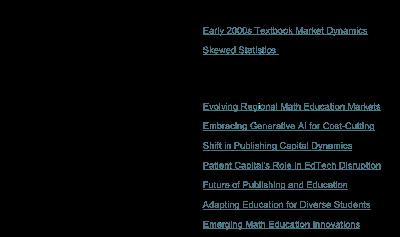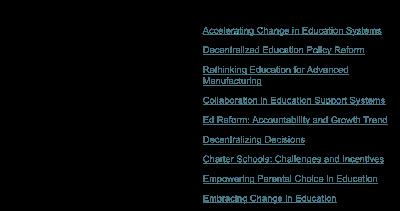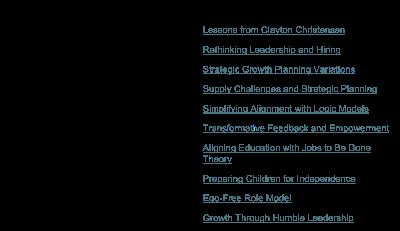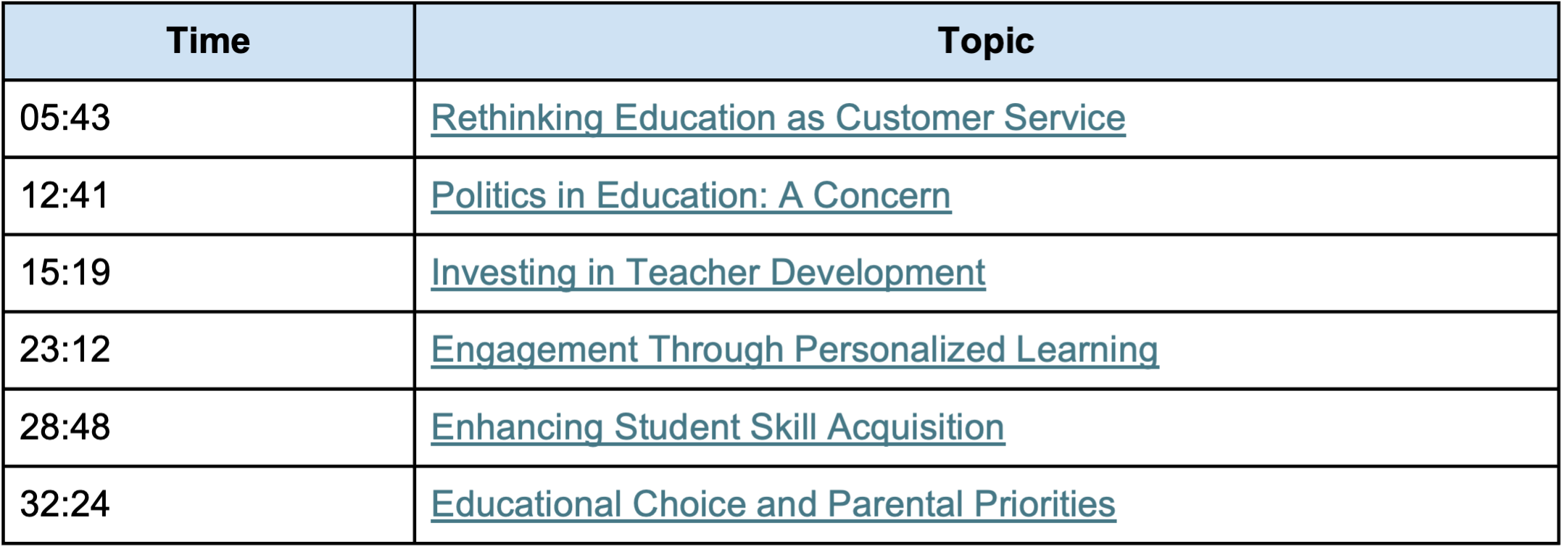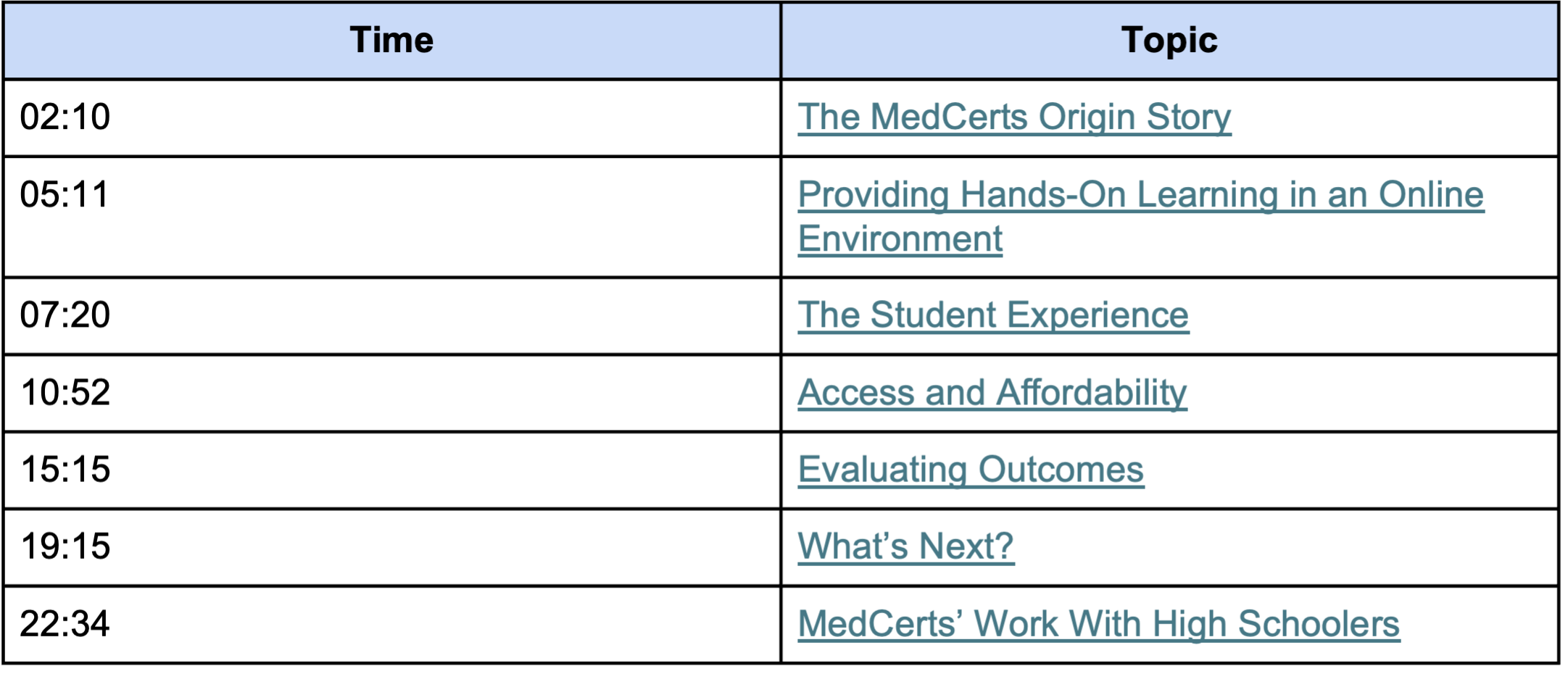The New Dynamic Core Curriculum Market
Description
Jeff Livingston, founder and CEO of EdSolutions, joined me to explore the rapidly evolving core curriculum market. The conversation traces how the once-static, “big three” publisher-dominated landscape has fractured because of shifting state adoption cycles, politics, digitalization, and the emergence of new competitors. Jeff explained how the dynamics have shifted from national dominance to regional markets, with digital tools enabling customization and lowering barriers for new entrants. The discussion also covered the impact of organizations like EdReports, new forms of patient capital, and the increasing importance of quality over pure scale or distribution.
Michael Horn
You are joining the show where we are dedicated to creating a world in which all individuals can build their passions, fulfill their potential, and live lives of purpose. And to help us think through that today, I am delighted. One of the folks that I've known for many years in the education space who I think is smarter about the curriculum market in all facets of that word than anyone I know is Jeff Livingston. He is the CEO and founder of EdSolutions. Jeff, you've had a long history in that curriculum world, and then now you keep tabs on it and give the market state for everyone and help them think about it. I'm just delighted you're here. It's good to see you, buddy.
Early 2000s Textbook Market Dynamics
Jeff Livingston
Thank you so much. Michael, you know that I am a longtime fan of yours and of this show. Delighted that I get to be on it with you to talk about one of my favorite topics, which is how much the curriculum market is changing. You and I first started talking about it. It's, you know, it's finally changing.
Michael Horn
It's finally changing. That's a good intro, right? Because, like, if we're going to actually help unleash student achievement potential and so forth, what they learn, the content they're receiving is important, it turns out. And as you and I know, like, I think when we first met, it was a GSV, if I'm recalling correctly, you were at McGraw Hill at the time, and I had published Disrupting Class from McGraw Hill, and you were like, this is still a static market, but we see these pathways. And yet the refrain I was always getting was, okay, yeah, there's a lot of noise in the supplemental space, et cetera, et cetera, but core curriculum, basal curriculum, right? Like, the Big Three doesn't change, will not change. And it's changing. But maybe give us, like, the history a little bit, like, who are the big three? Where are they now? Because that's changed a little bit as well.
Jeff Livingston
Let's not name when that was, when we first started having these conversations, but a while ago, say, early in the century, the big three, which, to be honest, Michael was four in those days. But we're fundamentally talking about Pearson, McGraw Hill, and Houghton Mifflin Harcourt. I say there were four because Houghton Mifflin and Harcourt were separate companies at that point, but they dominated all of core curriculum market all over the country. Because what drove that market even more in those days was, was big, large cycle, state adoptions in Texas and Florida and California. So you had to get on the list. You had to make sure once you got on the list you had sort of the marketing and distribution might to compete and only the giant companies, publishers really did in that market. And you know, let's, let, let's talk about the sort of economics of that market, right? When there were four players, you built your program to get 25%. If you got your 25%, everybody got a bonus.
If you got 35%, everybody got a lake house. Right? That's the way this world was. Plus big states like Texas would tell you years in advance how much they were going to buy, what they were going to make their decisions on. You could plan to finance your product development like clockwork. There were big players. Every once in a while a small player might emerge and do a little something and then one of the big ones would buy it. That's the way it worked in those days. And that concentration was reflected in the marketplace.
What's also interesting in those days, Michael, is that there wasn't a lot of really good information about what was actually in the market. The education market was unusual in that way. So at any given point in the early 2000s, at least two, sometimes three different programs were credibly saved. We have the market leading math or, or ela.
Michael Horn
Well, and Jeff, quickly help us understand, like when they're making those claims are they sell like elementary, middle, high school, all of it combined. Like how are they cutting these things?
Skewed Statistics
Jeff Livingston
So you could, you cut it to make yourself look the best. And all the information was self-reported to organizations like the Association of Educational Publishers or AEP, the association of American Publishers Education Division. So you just sliced it the way you wanted to and you could simultaneously be telling the technical truth and you could be directly contradicting somebody else who was telling the technical truth. So you just knew that the big ones, the big companies dominated in one or another kind of. Now what's also important is that the market is such that if you were one of the big publishers and you stumbled and got significantly less than your 25%, suddenly there are three, right? You couldn't make the big investments and not get.
Michael Horn
And that's because of the way scale economics work. Large fixed costs of publishing books and guides.
Jeff Livingston
Guides and so forth, salesforces, all of that. If you made the bet and didn't get your share, you were in trouble. And if you got significantly less than your share, you were really in trouble. Hence there's a company called Houghton Mifflin Harcourt and not a company called Harcourt Houghton Mifflin. Right. It's just, you know, they stumbled and you just couldn't stumble in that world. But what's fascinating is that today it's really, really difficult.
Michael Horn
So let's fast forward into today. Like what? Maybe let's start with those, the three remaining and talk. Because obviously Pearson had a change there as well. Talk about what's changed among those three, and then let's talk about how the entrants have sort of maybe made those changes.
Jeff Livingston
First, let's talk about a change in that market structure. The adoption calendar was sacrosanct. You knew that everybody in Texas was buying math at the same time. You had a sense of how much money they were going to have to spend. It was sacrosanct. In recent years, Florida stopped a math adoption in the middle and started over. California should be in the second year of its math adoption, but it's barely started. That certainty is gone.
And because that certainty is gone, the certainty of financing these big investments is harder.
Michael Horn
What killed that certainty?
Jeff Livingston
The big states and some of the small states fail to understand where their power came from. It came from a combination of having everybody buy at the same time and the certainty. So if California was definitely going to buy in, you know, 2023, everybody could plan for that. When it definitely became kind of maybe then you couldn't plan anymore.
Michael Horn
Yeah. And was that because of politics?
Jeff Livingston
Politics. The politics. The changes in what is considered high quality curriculum, all of that changed such that even the big states are not as certain as they used to be. The process is not as geared towards people who have big lobbying forces, big sales forces and maximum balance sheets. It's not as geared towards them anymore such that now there are some people who. When you and I first started talking about this, nobody would have mentioned that. Now you have to mention. So I think in terms of math, because it's kind of a math cycle.
Texas is doing a math adoption. California is starting one. Florida is going to be doing intervention math here really soon. So I'm thinking in terms of math and. Let's do that. So the first time you and I had this conversation, long, long, long ago.
Michael Horn
My hair was a little darker back then. Yeah.
Jeff Livingston
Yeah. Nobody said Zearn. Nobody said Amplify. Nobody considered Curriculum Associates a major player in those days when I had hair and yours was darker. Right. It could be in those days, but now you can't really talk about the math market without talking about players like that.
Michael Horn
Yeah. So we got Zearn, Curriculum Associates, Amplify. I guess you'd have Great Minds in that list.
Evolving Regional Math Education Markets
Jeff Livingston
Probably Great Minds with Eureka Math, Illustrative Mathematics, lots of places that you just would not have, would have not entered this

